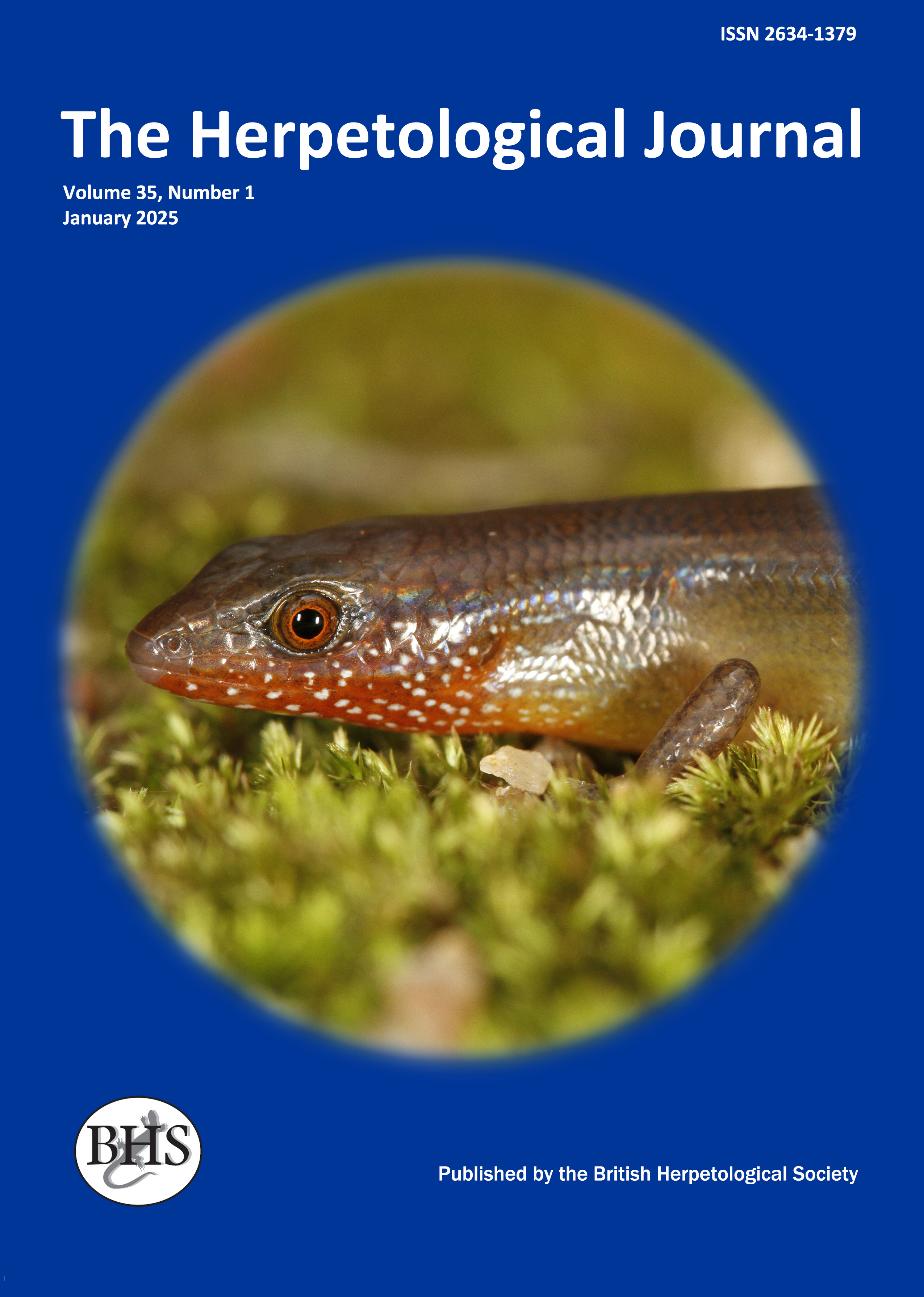
The Herpetological Journal
The Herpetological Journal is the Society's prestigious quarterly scientific journal. Articles are listed in Biological Abstracts, Current Awareness in Biological Sciences,Current Contents, Science Citation Index, and Zoological Record.
ISSN 0268-0130
2021 Impact Factor from Clarivate for the Herpetological Journal is 1.194, an increase of 0.332 from 2020.
pdf 05. Reproductive dynamics of a population of small marbled newts (Triturus marmoratus pygmaeus) in south western Spain
838 downloads
Open Access
pp.93-98
Authors: Carmen Díaz- Paniagua
Abstract: A breeding population of small marbled newts in a temporary pond in SW Spain was sampled over five successive years. Males and females entered the pond just after it flooded in autumn. The adult aquatic season persisted until March or April, with maximum capture rates occurring mostly in January. Several sampling methods were used of which the most efficient was funnel trapping. Recapture rates were low. The population was estimated at about 1000 newts in 1987. Sex ratio did not differ from 1:1 in three seasons. In the other two seasons, which were characterized by low autumn rainfall, males outnumbered females by 2:1, probably as a result of many females failing to enter the pond to breed in those years. In the last two study years, the mean body size of newts was smaller than in previous years, possibly as a consequence of the adverse conditions of the two preceding autumns, which would have had repercussions for the growth of juveniles. An increase in physical condition and individual body mass throughout the aquatic season was observed in both sexes, confirming that the adult aquatic phase is advantageous for growth and maintenance of newts, as well as being necessary for reproduction. The age structure of the population was obtained in one of the seasons. Most males and females were 2-3 years old and a small percentage was one year old. The frequency of 1 year old mature females was lower than that of males. Females showed higher survival rates than males.

